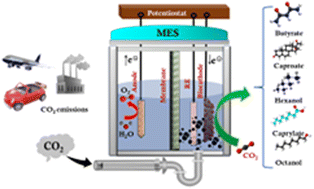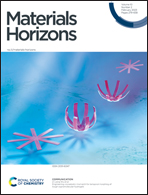Microbial electrosynthesis: carbonaceous electrode materials for CO2 conversion†
Abstract
Microbial electrosynthesis (MES) is a sustainable approach to address greenhouse gas (GHG) emissions using anthropogenic carbon dioxide (CO2) as a building block to create clean fuels and highly valuable chemicals. The efficiency of MES-based CO2 conversion is closely related to the performance of electrode material and, in particular, the cathode for which carbonaceous materials are frequently used. Compared to expensive metal electrodes, carbonaceous materials are biocompatible with a high specific surface area, wide range of possible morphologies, and excellent chemical stability, and their use can maximize the growth of bacteria and enhance electron transfer rates. Examples include MES cathodes based on carbon nanotubes, graphene, graphene oxide, graphite, graphite felt, graphitic carbon nitride (g-C3N4), activated carbon, carbon felt, carbon dots, carbon fibers, carbon brushes, carbon cloth, reticulated vitreous carbon foam, MXenes, and biochar. Herein, we review the state-of-the-art MES, including thermodynamic and kinetic processes that underpin MES-based CO2 conversion, as well as the impact of reactor type and configuration, selection of biocompatible electrolytes, product selectivity, and the use of novel methods for stimulating biomass accumulation. Specific emphasis is placed on carbonaceous electrode materials, their 3D bioprinting and surface features, and the use of waste-derived carbon or biochar as an outstanding material for further improving the environmental conditions of CO2 conversion using carbon-hungry microbes and as a step toward the circular economy. MES would be an outstanding technique to develop rocket fuels and bioderived products using CO2 in the atmosphere for the Mars mission.

- This article is part of the themed collections: Recent Review Articles, Biocatalysis: A cross-journal collection and New horizons in materials for energy conversion, optics and electronics


 Please wait while we load your content...
Please wait while we load your content...